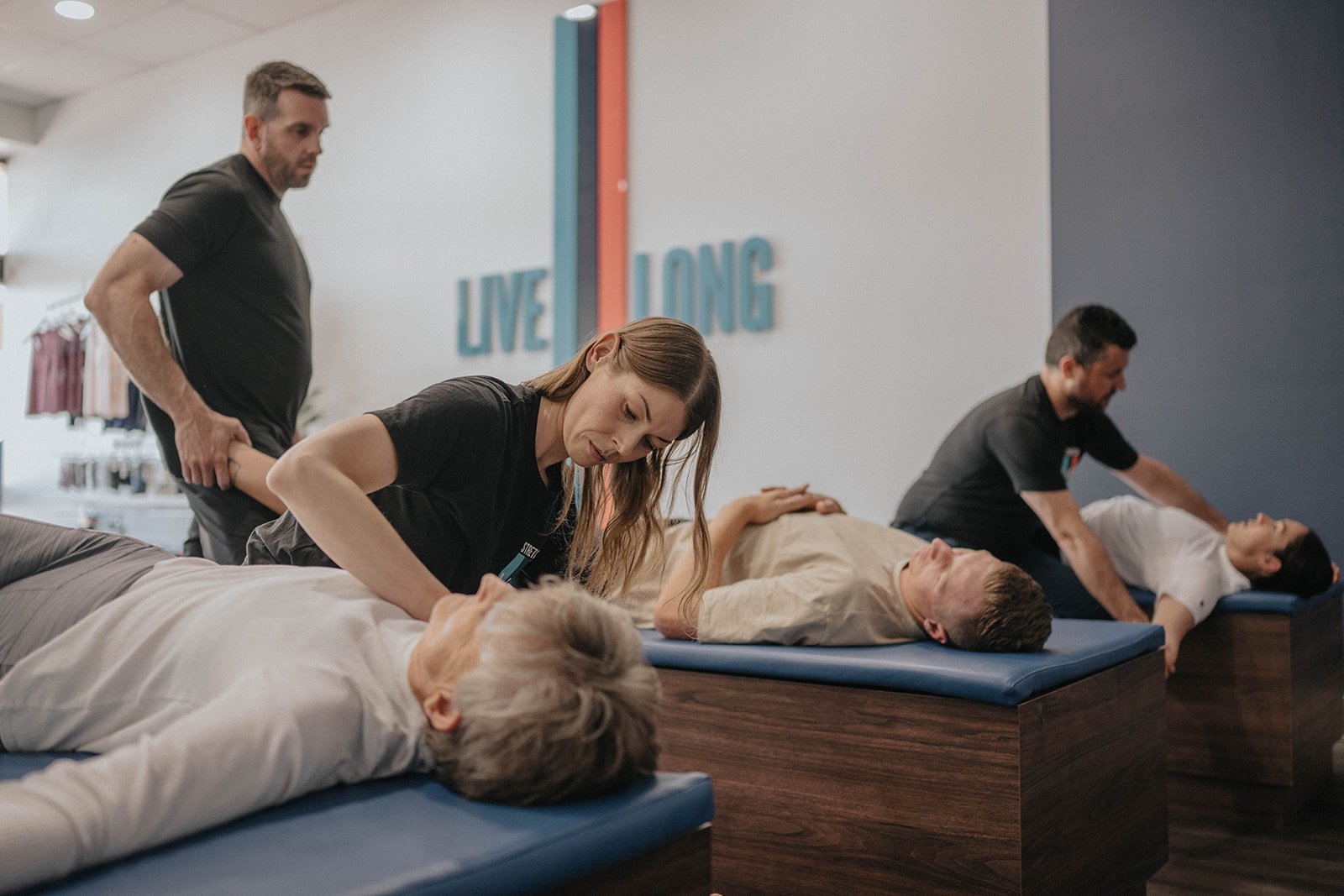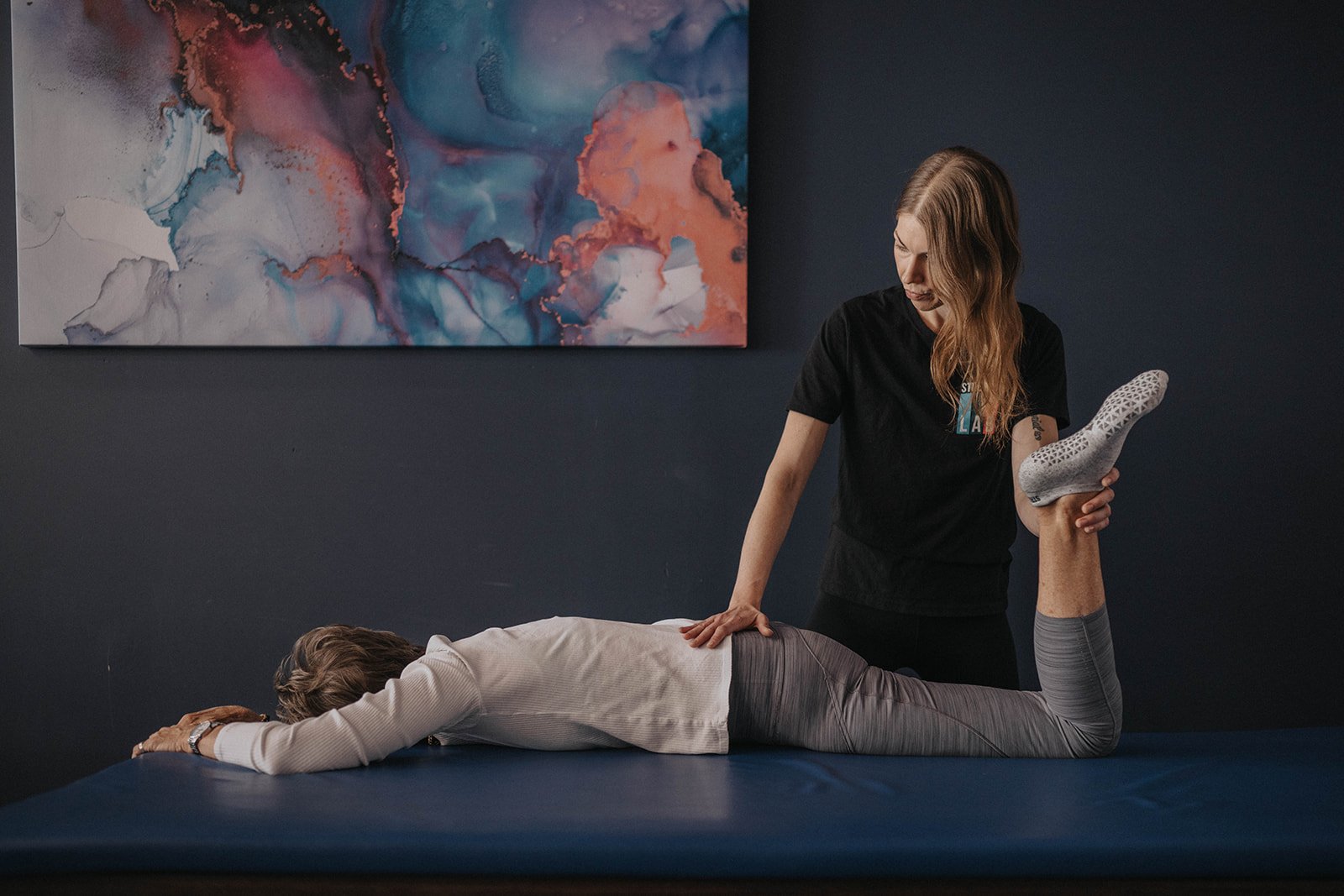Our bodies work hard every day, balancing the demands of regular exercise, long hours at the office desk, and the countless little tasks in between. Keeping our muscles, joints, and overall flexibility in top shape is crucial for maintaining our well-being and staying active. But with so many wellness options available, it can be challenging to choose the best approach for your needs.
Massage therapy and stretch therapy are two powerful techniques that can help you feel your best. While both offer unique benefits, understanding how they differ and complement each other can help you make informed choices about your self-care routine.
In this post, we’ll dive into what each therapy entails, compare their benefits, and explore how they can work together to enhance your overall health.

What Is Massage Therapy?
Massage therapy is a hands-on technique designed to alleviate muscle discomfort, enhance relaxation, and promote overall well-being. At its core, this therapy involves applying pressure to target deep layers of muscle and connective tissue.
This pressure can be delivered through various techniques, including using the therapist's hands, fingers, elbows, or forearms. Modern tools like massage guns are also used to provide targeted relief and enhance the effectiveness of the therapy.
- Relaxation: The soothing touch of massage promotes a state of relaxation, reducing stress and enhancing mental clarity.
- Pain Relief: If you've got sore muscles or chronic pain, massage can provide significant relief from discomfort.
- Increased Circulation: By stimulating blood flow, massage helps to deliver essential nutrients and oxygen to the muscles, promoting healing and vitality.
- Toxin Release: It also supports the body’s natural detoxification processes by encouraging the release of metabolic waste products.
While massage therapy can be incredibly beneficial, it’s good to remember that less can sometimes be more. Too much pressure or improper techniques can lead to discomfort or even injury.
Understanding Assisted Stretching
Much like massage therapy, assisted stretching is a fantastic way to enhance your flexibility and ease muscle tightness. However, while massage focuses on relieving muscle tension through pressure, assisted stretching involves an external force to help elongate and stretch your muscles.
But how does it work?
In assisted stretching, a therapist uses their hands or other tools to guide and support your body through a series of stretches. This external help ensures that your muscles are stretched properly and effectively, often targeting areas that might be hard to reach on your own. By working with a therapist, you can experience deeper stretches and better alignment, which helps improve overall muscle recovery and flexibility.
- Reduces Risk of Injury: By improving flexibility and muscle balance, assisted stretching can help prevent injuries during physical activities.
- Improves Flexibility & Mobility: Regular stretching increases your range of motion and keeps your muscles limber.
- Improves Workout Performance: Enhanced flexibility can lead to better performance and reduced muscle strain during exercise.
- Increases Blood Flow to the Muscles: Stretching promotes circulation, which helps nourish your muscles and aids in recovery.
- Improves Posture: By stretching out tight muscles and balancing muscle groups, assisted stretching can help improve your posture.
- Calms the Mind & Reduces Stress The practice of stretching also encourages mindfulness and relaxation, helping you to unwind and centre your thoughts.
Assisted stretching is suitable for everyone, whether you're an athlete, a busy professional, or simply someone looking to maintain good health. It’s a practical way to learn proper stretching techniques, enhance your flexibility, and support your overall physical wellness.
Read More: Beyond Exercise: How Stretching Completes Your Fitness Routine
.jpg?width=8256&height=5504&name=077_STRETCHLAB_20220205-_DSC8625%20(1).jpg)
Massage Therapy Vs Stretch Therapy: Which To Choose?
When deciding between massage therapy and stretch therapy, it's important to consider how each approach aligns with your personal needs and goals. Both therapies offer unique benefits, and understanding their differences can help you make an informed choice.
- Depth of Muscle Work: Massage therapy can delve deeper into your muscles, fascia, and soft tissues. Techniques like deep tissue massage target the deeper layers, providing relief from chronic tension and soreness. Stretch therapy, on the other hand, primarily focuses on lengthening and improving flexibility, which may not reach the same depth as a massage but is excellent for maintaining muscle elasticity and range of motion.
- Passive vs. Active Therapy: Massage therapy is typically a passive experience where a skilled therapist works on your body to alleviate tension and discomfort. You relax while the therapist applies various techniques to your muscles. Stretch therapy, particularly active stretching, requires your involvement and effort. You actively engage in the stretching process, which helps you develop flexibility and muscle control over time.
- The Duration of Benefits: A well-executed massage can leave you feeling relaxed and rejuvenated for several days. It effectively addresses muscle soreness and stress, providing immediate relief. Stretch therapy, while beneficial, might offer more transient flexibility improvements unless practiced regularly. To reap the full benefits, it’s important to incorporate stretching into your routine consistently.
- Consider Combining Both Therapies: The good news is that massage therapy and stretch therapy can complement each other beautifully! Using both can enhance your overall wellness and performance. For example, massage therapy can ease sore muscles and reduce stiffness, while stretch therapy can support ongoing muscle recovery and improve flexibility. This combination is especially beneficial for athletes and fitness enthusiasts, as it promotes faster recovery and helps maintain peak performance.
.jpg)
What To Expect During Your First Stretching Class
While you can certainly stretch at home, attending an assisted stretching class offers a unique advantage: the expertise of a qualified instructor. At Stretch Lab, you’ll be guided by experienced professionals who are skilled in helping you perform each stretch correctly and safely.
In a session, you can expect a mix of stretching techniques. You’ll work through static stretches, where you hold a stretch for a period of time, and dynamic stretches which involve gentle movements to warm up your muscles. To make your stretching even more effective, sessions will incorporate props like foam rollers or resistance bands, which help target specific areas and deepen your stretches.
You’ll also have the chance to learn new techniques and stretches that work different parts of your body. Your instructor will show you how to do each stretch, explain its benefits, and offer tips to tailor the stretches to your needs. This personalized attention helps you understand how to stretch correctly and how these techniques can support your fitness goals.
Read More: Stretching 101: 5 Things You Need To Know For Stretching Classes
.jpg?width=1600&height=1067&name=_DSC2505%20(1).jpg)
Stretch Your Way to a Healthier You!
Both massage therapy and stretch therapy offer unique benefits that can improve your well-being in different ways. Massage therapy excels at deep muscle work and immediate relief from discomfort, while stretch therapy focuses on increasing flexibility and mobility. But by incorporating both into your wellness routine, you can enjoy a comprehensive approach to muscle care and overall health.
If you’re ready to experience the benefits of assisted stretching firsthand, why not join us at Stretch Lab? Whether you’re looking to boost flexibility, reduce muscle tension, or simply enjoy a relaxing experience, our classes offer a welcoming environment to help you achieve your wellness goals. Book your session and start stretching your way to better well-being!



